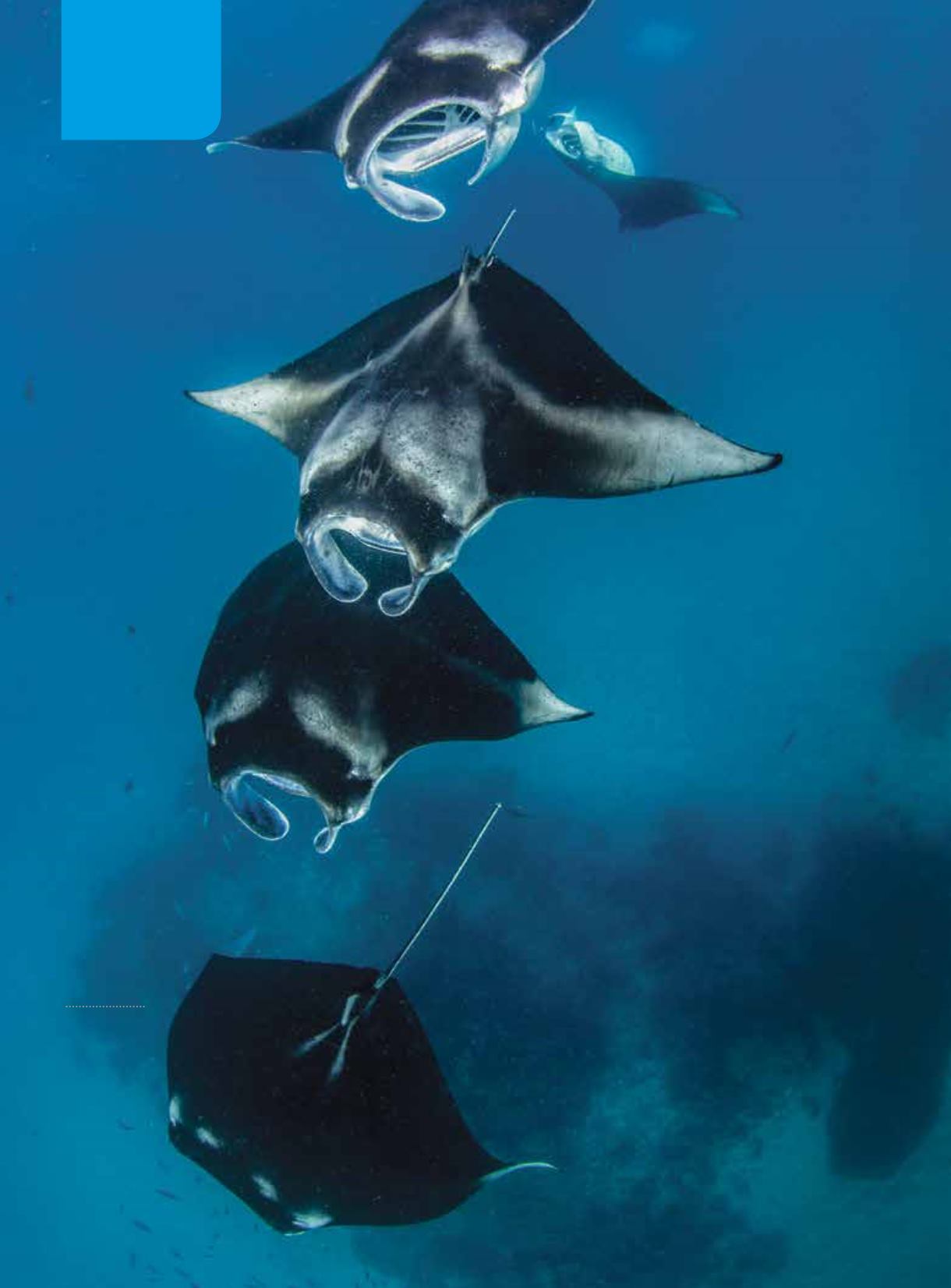

D
espite increasing public
attention on the plight
of sharks during the past
decade, many people still
forget the sharks’ cousins: the
rays. Perhaps it’s no surprise
that rays don’t garner as much media attention
as sharks, but they likewise lag behind sharks
as both subjects of scientific research and
beneficiaries of legal protections.
For divers, however, few sights are
more breathtaking than the graceful and majestic
underwater flight of the manta ray, which can
reach the remarkable size of more than 20 feet
across. This animal, which plies the world’s
tropical seas on large muscular wings, has been
poorly understood until recently. Much of what
we know about manta rays has been discovered
within the past decade, and today divers can
predictably encounter mantas at an increasing
number of dive sites.
Devil rays (as they are commonly known due
to the hornlike appearance of their cephalic fins)
are under an ever brighter public and scientific
spotlight. The three manta ray species and
their nine lookalike cousins, the mobulas, are
now highly sought after, both alive and dead.
Wide-ranging
Manta birostris
is the largest of
the mantas;
Manta alfredi
is a smaller, more
coastal species that primarily occupies the Indo-
Pacific and eastern Atlantic; the third (not yet
fully described) species is found primarily in the
Western Caribbean and Gulf of Mexico. These
12 large and highly migratory rays all subsist on
104
|
SPRING 2016
CLARK MILLER
WATER
PLANET
SYMPATHY
FOR THE
DEVIL
By Rachel
Graham and
Sarah Fowler
EYES ON
MANTAS
AND
MOBULAS
Mantas in
Hanifaru Bay,
a marine
protected
area in the
Maldives and
a core site in
the recently
established
Baa Atoll
UNESCO
Biosphere
Reserve


















